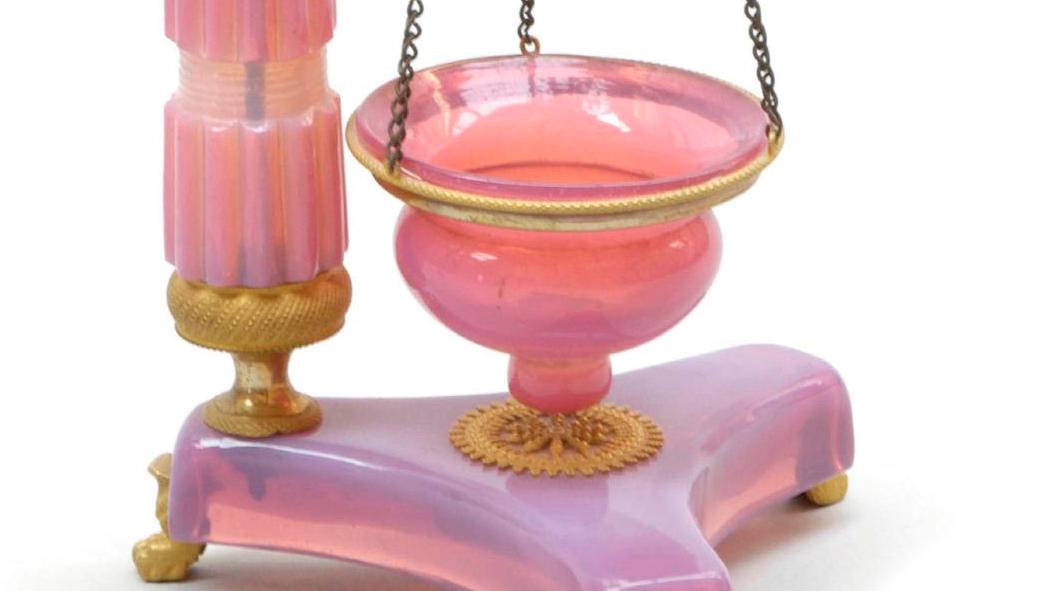Its iridescent shades have made opal a much-prized gem since classical antiquity. Though difficult to imitate, this stone inspired glassmakers to start producing magnificent opal crystal in the 19th century, before gradually shifting away from the specific features of its model.
Gorge-de-pigeon opal crystal and gilt bronze night-light, 1820-1830, h. 24 cm/9.4 in. Marc Imhaus collection. Paris, Drouot-Richelieu, June 29, 2007. Bonduelle - Lancry Auction House, Delvaux Auction House. Mr. Dufrenne.
Result: €18,049
Opaline is a term that can be used to describe a wide variety of different types of materials. Especially because between the beginning and the end of the 19th century, the material evolved rapidly, shifting from crystal to glass, and from luxury to mass production. Before that, in the late 18th century, a few opal crystals with soapy shades had been obtained by adding tin oxides and charred bone, but the opaline that emerged in the 1810s looked more like the stone it sought to imitate. Luxurious decorative objects then sported opalescent and translucent shades of great delicacy. The iconic gorge-de-pigeon—an iridescent purplish-pink—was obtained by adding gold salts, but was not as rare as amber yellow, which disappeared after 1820 because of its technical difficulty. While the Baccarat…
com.dsi.gazette.Article : 35746
This article is for subscribers only
You still have 85% left to read.
